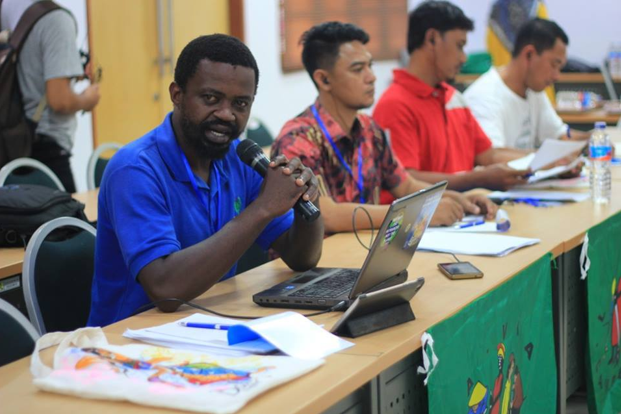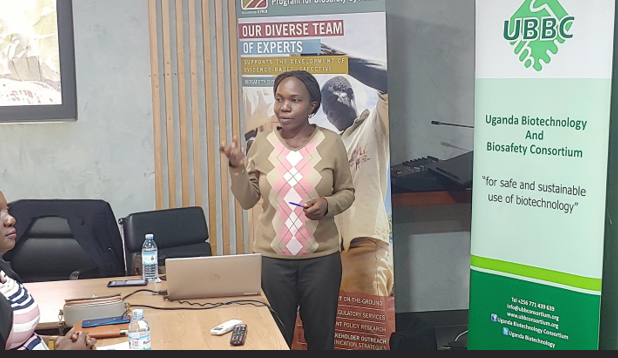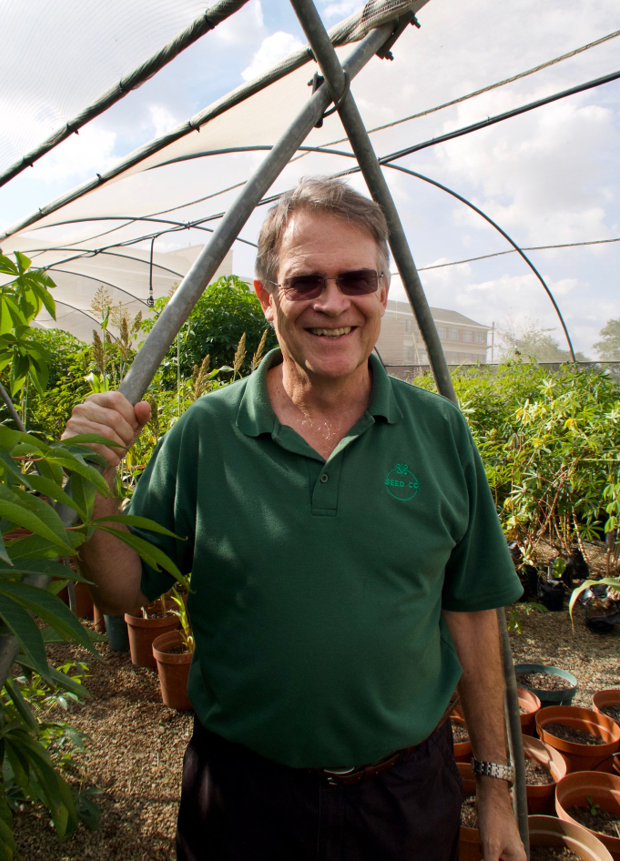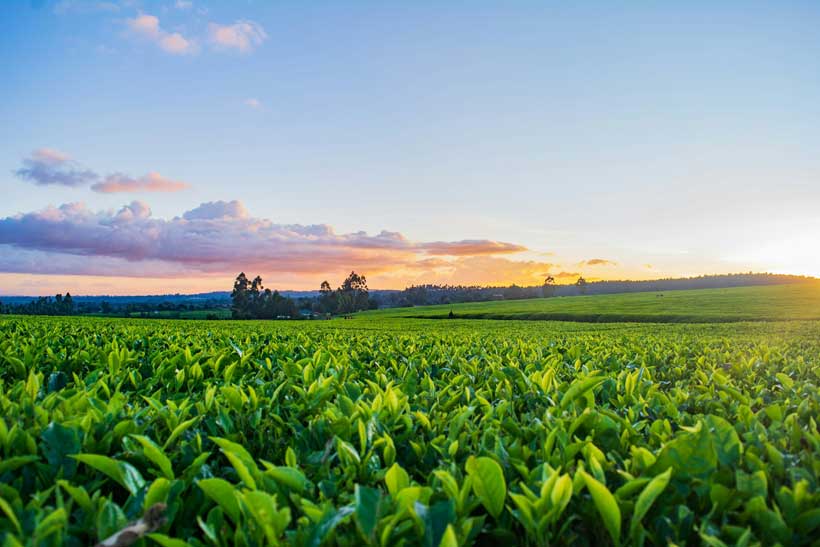Read in
Climate change is an ongoing and increasing threat to African agriculture.
Prolonged droughts, pest outbreaks, and poor soil quality are all exacerbated by erratic weather patterns.
Genetically-engineered crops are one plank of the adaptative solution, but farmers need more tools in their toolbox. That’s where mutation breeding and other nuclear agriculture technologies come into play.
Often overshadowed by the hullabaloo surrounding gene editing. Mutation breeding offers tried and true measures that have been honed in recent years.
It involves exposing plants to radiation or chemicals to induce genetic mutations, creating new varieties with desirable traits such as drought tolerance, disease resistance, or higher yields. Originating in the 1920s and gaining momentum post-World War II, this method has contributed to the development of thousands of unique and popular crop varieties worldwide. Think: Rio Red sweet grapefruit, Durum wheat, Calrose rice and Golden promise high-yield barley.
In Africa, nuclear technologies, including mutation breeding, have been promoted through partnerships with the International Atomic Energy Agency (IAEA) and the Food and Agriculture Organization (FAO).
Today, countries like Nigeria, Ghana, and Sudan use these technologies to improve staple crops like rice, sorghum, and groundnuts, enhancing food security and climate resilience in the face of environmental challenges.
Even while some of these technologies have already been successfully deployed in a number of African nations, such as Morocco, Ghana, Uganda, Nigeria, Eswatini, Sudan and Kenya among others, there is still opposition to them, much like there is to GMOS and genome editing.
Mutation breeding skeptics
Data from safety clinical studies underscoring that the technologies pose no significant safety risks has not swayed skeptics like Ghanaian scientist Simon Makafui. He claimed that nuclear agriculture technologies like isotopes would contaminate the continent’s arable farmland soils, waterways, food chains, ecosystems and endanger wildlife.
“Cesium-137, a radioactive isotope used in agriculture to sterilize insects and grow plant mutants, is a hazardous substance, Makafui said.
It not only pollutes land, food chains, and water systems, but it also poses a threat to human health. And, as various anti-irradiation groups have pointed out, nuclear technologies such as Gamma rays, which are one type of radiation used in food irradiation, emit “radiolytic compounds” that are carcinogenic and so risk human life. Is it really a safe bet to deploy technologies that, among other things, negatively impact food chains and alter the DNA of staple crops, restricting yields and growth?
There is no scientific evidence supporting his claims. Nevertheless, his rejection of nuclear farming is echoed throughout the activist community. Critics claim it relies on random genetic changes, which they say can create unstable crop varieties with unintended ecological impacts. These crops may disrupt local ecosystems, increase reliance on agrochemicals and sometimes expensive commercial seeds and could lead to biodiversity loss.
Critics also advance a social argument. Joyce Brown, the Director of Programs at the Health of Mother Earth Foundation, a Nigerian ecological think tank that advocates for climate justice and food and seed sovereignty, said it was unreasonable for African countries that struggle to allocate funds for infrastructure, extension service, irrigation, etc, to invest in high-cost nuclear technologies.

“Nuclear technologies in agriculture portend more harm than benefits and are a less viable option for the continent’s smallholder farmers,” she added.
Farmers in Sub-Saharan Africa are already employing chemical pesticides without proper precautions,” argued Kenyan Environment scientist David Calleb Otieno, who is also the co-founder and policy chief of the Kenyan Peasants League. “If they can’t provide safety equipment for pesticide use, will they provide for nuclear technology.

Counter arguments
Scientists shake their heads at such comments, as most are grounded in ideologically-motivated myths that distort the science. Hellen Beatrice Apio, a Ugandan biotechnology researcher took exception to the notion that nuclear agricultural technologies would contaminate the continent’s arable farmland soils, waterways, food chains, ecosystems and affect wildlife.
“On the contrary, nuclear agriculture, which is at the nexus of nuclear science and agriculture, is safe and will help Sub-Saharan Africa, which faces more food security challenges than any other region in the world, to establish robust and sustainable agricultural systems,” Apio said.

According to Apio, continuing with business as normal won’t cut it for the continent. The region’s agricultural production is stagnating, she argues, dragged down by antiquated methods long-abandoned in every other region in the world.
“These technologies will provide the continent long-term solutions for developing climate-resistant crops, reducing food losses, improving nutrition, boosting crop yields, and enhancing food safety and its already happening.”
Apio added that through food irradiation, which is supported by the World Health Organisation (WHO), the American Dietetic Association, and the Scientific Committee of the European Union, African countries could significantly cut their food loss and waste—which the Food and Agriculture Organisation estimates to be between 30 and 50% which is higher than the global average.
The African Union, which is hardly captured by agri-business, has been promoting these techniques for decades. They note it could jump cassava, bean, rice, banana and potatoes yields. This technology provides the fastest way to generate diversity to develop suitable crops and their cultivars that can withstand all adverse stresses (biotic and abiotic) as a result of climate change,” argued Emmanuel Ogwok, a lecturer at Uganda’s Lira University and a senior research officer at the country’s National Crop Resources Research Institute.

“Mutant plants grow faster and have variation in flavor. While it takes anywhere between 8-10 years to develop superior cassava varieties by conventional breeding, mutation breeding takes only about 5 years or less,” Ogwok said.
Case studies: Namibia and Uganda
One African country that has successfully harnessed mutant breeding is Namibia, one of Africa’s driest countries.According to a recent blog post on the World Nuclear Association website, the country employed the technique to produce significantly higher yielding cowpea, sorghum, and pearl millet seeds, with yields boasted by 10-20%. The novel varieties are ostensibly more resistant to drought, temperature stress, and pests, which are essential in Namibia’s challenging plant growing conditions.
Martha Haihambo, a 31-year-old smallholder maize and sorghum farmer from Witvlei village in Omaheke, central Namibia, is one of several smallholder farmers who recently benefitted from combining nuclear techniques and water-saving irrigation technology, known as small-drip irrigation.
She said using the nuclear technology of Cosmic Ray Neutron sensors (CRNS) which monitors soil moisture and soil water content in a non-invasive and continuous manner along with her irrigation system on her half-acre farm has greatly improved her productivity.
In East Africa, Uganda has also made effective use of mutation breeding. Plant breeders at the country’s National Crop Resources Research Institute (NaCRRI) have since the early 2000s, used mutation breeding, to develop new and improved crop varieties that are genetically diverse and climate resilient, such as cassava, rice, beans, and potatoes.
In 2022, the plant breeders collaborated with the Food and Agriculture Organization (FAO) and the IAEA to develop 42 new cassava varieties that are high yielding and resistant to the cassava brown streak disease (CBSD), which the Centre for Agriculture and Bioscience International (CABI), indicates can cause yield losses of up to 100% in susceptible cassava varieties.
Mark Laing, a seasoned plant pathologist and Professor Emeritus at the Department of Plant Pathology at the University of KwaZulu-Natal in South Africa, told the GLP that Africa is growing many crops that could be improved relatively quickly, cheaply and productively with mutation breeding.
“Crop yields are relatively stagnant in Africa, as are the improvements in quality traits. It is the best plant breeding option. It can be applied to any crop,” he told the GLP.” Morever, he added, crops with induced genetic mutations have particular advantages for self-pollinating crops such as beans, sorghum, wheat and rice. It is also a good option for a vegetatively propagated crop such as cassava or sweet potato, where one excellent mutant plant with special traits, such as improved nutritional value, can be propagated into millions of progenies.”

Laing, who has authored more than 380 research papers and 500 publications in plant pathology, added that if plant breeders on the continent can breed faster crops with better nutritional profiles, food security, which is a top priority for most countries in Africa, will be achieved in a shorter period.
“And if toxins are bred out of crops, this will be an advantage for African farmers and their consumers. With nuclear technology, plant breeders can eliminate some undesirable traits such as cyanogen production in cassava or early shedding of grain in legumes and cereals and can breed for specific traits, especially qualitative traits such as herbicide resistance.”
Other examples of successful nuclear agriculture use in Africa
Apio added that other nuclear derived and environmentally friendly technologies like the Sterile Insect Technique or (SIT) which relies on the application of ionizing radiation, is helping or will help in the control of insect pests, which are responsible for significant reduction in production of agricultural crops in Africa and across the globe.
The projected annual economic impact of pests alone on Africa’s agricultural sector is USD $65.58 billion, according to the Centre for Agriculture and Biosciences International, or CABI.
“The (SIT) which provides a sustainable alternative to chemical pesticides has already helped combat the tsetse fly, which carries the Trypanosomosis disease, which affects both humans and animals in countries like Zanzibar and Senegal.”
“In Sudan, nuclear derived technologies in soil and water management have helped several women farmers move out of poverty. In Cameroon, they have helped veterinary authorities fight off ruminant disease.”
In Lesotho, nuclear-derived techniques such as the fluorescent antibody test (FAT), enzyme-linked immunosorbent assay (ELISA), radioimmunoassay (RIA), and polymerase chain reaction (PCR) have been utilised to identify, characterize, and combat viruses that infect animals and humans.
In Kenya, nuclear techniques have helped farmers adapt to climate change and improve their food and water security.
In Madagascar, agricultural nuclear technologies, principally isotopes have helped control soil erosion and land degradation.
In Mali, West Africa, irradiating sorghum and rice seeds has resulted in more productive and marketable types.
Ogwok does agree that smart regulations are necessary as these technologies advance. While nuclear agriculture is innovative, its adoption on the continent must be guided by robust regulatory frameworks and public involvement to ensure its appropriate and ethical usage.
Richard Wetaya is an award-winning Ugandan science journalist who specializes in covering environmental issues, biotechnology, energy, health and climate change. Follow on LinkedIn Richard Wetaya and X @rwetaya



